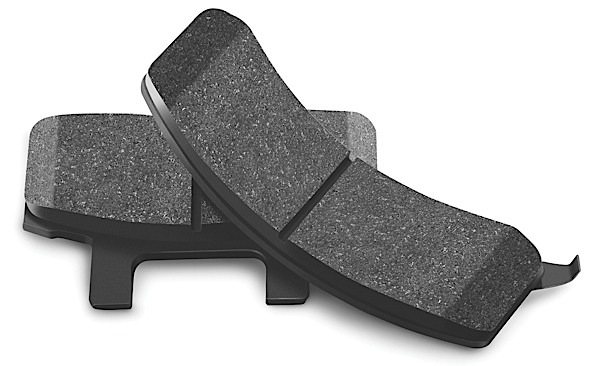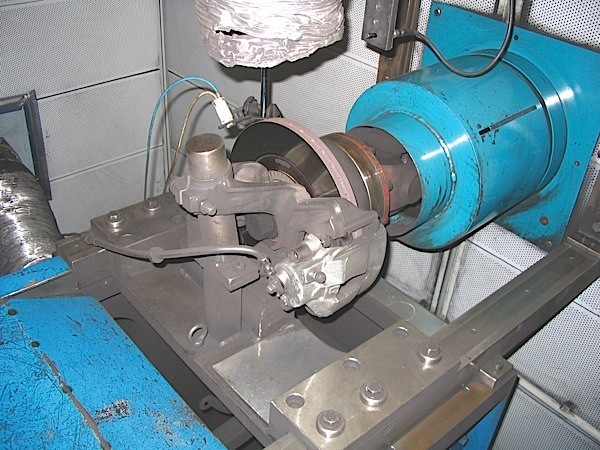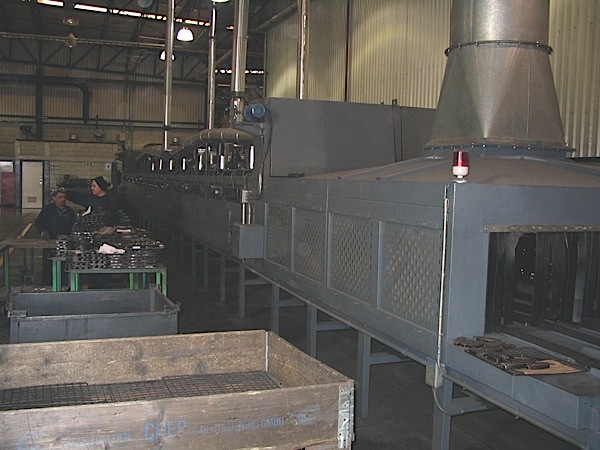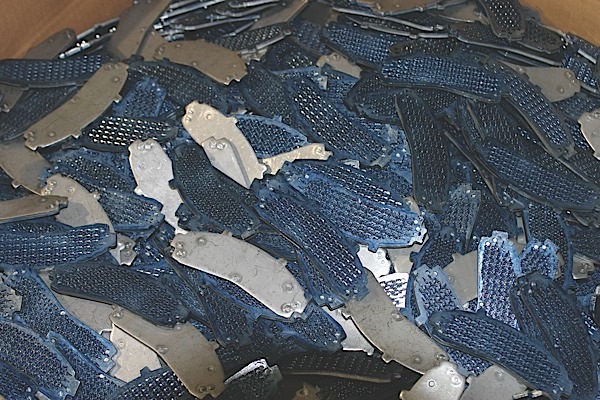
It can be confusing when you look at an advertisement or the side of a brake pad box. Taken at face value, you would think that there would be no more brake noise, precise stopping distances and that brake pads last forever. As a technician, you know this is not true.
In order to make the right selection, you must do your homework while still remaining skeptical. There are two questions you must always ask after a after a manufacturer makes a claim:
1. “Compared to what?”
2. “Does that include every application in the line?”
The reason why some claims are broad and ambiguous is it leaves the company and customer to apply their own context.
“Better” means one item is superior to another in some way, while “best” means it is superior to all others in some way. However, some brake pad manufacturers fail to list the way in each they are being compared. In the case of “better,” to what they are comparing (a competitor’s product, an earlier version of their own product, or nothing at all). So, without defining how they are using the terms “better” or “best,” the terms become meaningless.
An ad which claims “Our brake pad is better” could be just saying it’s an improvement over using no pads at all.
There are several common claims and features that many manufacturers use in their ads and on the side of the box or in an ad. Below are the most common ones and what they really mean.
1. Meets or Exceeds OE Specs
The first question you should be asking yourself is: Where are these OE specifications? Is this a document that includes the dimensions as well as the materials used? The fact of the matter is that there are no documents like this shared with aftermarket brake pad manufacturers.
OE brake pad specifications are proprietary to the OEM and the supplier of the original pads. One civil case has been filed against a company making these statements and it was settled out of court.
It is OK to say “Designed to OE specification” or “Engineered to meet…”, but the pad manufacturer should be able to produce in-house or independent testing information where they compare their pads to the OE pads with either on-vehicle or dynamometer testing.
Some aftermarket suppliers can make the claim that they can meet or exceed OE specifications because they were the OE supplier on a platform for the pads.
Some aftermarket pads are better than the OE pads. The reason is two fold. First, as vehicles age, they accumulate more miles, more miles mean that the manufacturer has a better idea what the brake pad application needs to deliver better performance over the OE application. Second, some aftermarket friction materials will use better materials than the OEM due to less restrictive pricing.
2. Reduced Stopping Distances
Reduced stopping is one of the misunderstood and misused claims in the business. Stopping distance claims are almost never followed up by “compared to what?” Also, it is almost never stated how the tests were performed or if it was on more than one application.

3. Dynamometer Tested
If the box says, “Dynamometer tested,” this is a good thing. A brake dynamometer can be more sophisticated and larger than an engine dynamometer.
Brake dynamometers can simulate the conditions the brake system will experience in a much shorter time with more controlled results. This means that a brake dynamometer can simulate the mass, inertia and performance capabilities of a vehicle.
The typical brake dynamometer can cost anywhere between $350,000 (used) to more than $1 million. Some brake friction suppliers own dynamometers, while some lease dynamometers from testing companies.
In 2013, many new dynamometer Society of Automotive Engineers (SAE) testing standards will be approved that are designed to simulate on-vehicle FMVSS test for brake pads and rotors. This is great news for the technician when they are shopping for pads.
4. Quiet Performance
Just about every pad on the market makes this claim. Since the word “quiet” means different things to different people, it is difficult to dispute this claim. This is another claim that should be followed up by the question, “compared to what?”
5. Low Copper Content
A number of states are issuing guidelines on the amount of copper that can be present in a brake pad. Some pad manufacturers are making the claim their pads are “low copper.”
Unless they can say their pads meet the standards of a specific state’s law, the claim is misleading. If the supplier makes the claim they are “copper free,” they should not have any copper.
6. Low Dusting
Some manufacturers claim their pads are low dusting, dust does not show on the wheel or the dust is not attracted to the wheel.
These are all viable claims if the pads are formulated with these attributes in mind. But, no brake pad manufacturer can claim that they do not produce brake dust … this is impossible. All pads make brake dust.

7. Factory Cured/Scorched/Heat Treated
This is a claim you should be looking for when you are selecting pads. Scorching or curing can save you time and comebacks.
A brake pad is held together by resins. These resins need heat and pressure to cure. When the resins cure, the friction material becomes stronger. But, the curing process produces gases and smells. These gases cause brake fade and often the “new brake pad smell.”
Some manufacturers will try to minimize this from happening by heating or “scorching” the pads in ovens to cure the resins. This process can reduce the chances of brake fade. For the technician, the process can reduce bedding and burnishing time during the test drive. For the driver,
it can eliminate the new brake pad smell that they might experience during the first few hard stops.
Bottom Line: If a brake pad is cured by scorching or heat treating it can reduce comebacks and eliminate the need for long break-in procedures.
8. Mechanical Retention/Mechanical/Bonding

On some demanding applications where noise and safety are critical to the performance of the entire brake pad, some manufacturers are turning to new attachment methods. Some manufacturers are creating stronger bonds with the backing plate through special surface treatments that create more surface area for bonding. Another approach has been new methods of mechanical attachment.
One brake backing plate manufacturer is able to put hundreds of small hooks on the plate that grab the friction material. According to the manufacturer, the hooks increase the shear strength and can prevent edge lift of the friction material. Not only can it increase overall safety, but it can decrease incidents of unwanted noise.
9. Slots, Chamfers, Friction, Shapes
OEMs tune the shape of the brake pad to the overall system. This includes elements like overall length, width and design elements like chamfers and slots. These physical dimensions and design elements can reduce excitation and shift natural vibrational frequencies.
Some aftermarket brake pad manufacturers will tune the shape of their pads to suit older vehicles and the characteristics of their friction material blend.
10. Long Life
Making the claim of long life can be difficult to prove. So many variables determine the life and wear of the brake pad. Every vehicle and driver is different.
Some manufacturers who make pad life claims will site AK Master or SAE J2522 testing. This test compares friction materials for wear and involves weighing the pad before and after testing.
11. Ceramic
Ceramic material’s structural properties are very stable under high temperatures, much like Corning cookware. But this is where the comparison ends. Ceramic materials that go into a brake pad are very small strands that are engineered to be a certain length and width.
There are three advantages of ceramic pads in certain applications. First, since the ceramic materials offer stable performance under a wide range of temperatures, they can offer quiet performance. Second, ceramic brake pads manage heat in the caliper better on some vehicles than some non-ceramic applications. Third, ceramic brake dust does not show up on or stick to wheels like some other brake pad formulations. This could be an important factor if you have an expensive set of custom wheels.
But, not all vehicles work well with ceramic formulations and the OE will tune the brakes to work with a semi-formulation.
12. NAO
Non-Asbestos Organic (NAO) friction materials typically wear more than harder semi-metallic compounds. It’s hard to generalize about the wear characteristics of NAO and ceramic-based compounds because there are so many. Wear varies depending on the formula the friction supplier chooses for a particular application. Technically a ceramic is a NAO material.
13. SEMI-MET
Semi-Metallic pads use metal fibers to give structure and provide friction. The metals used are typically high quality steel, copper and other exotic metals.
So what is the other part of the semi-metallic mix? It is a variety of materials like glues, lubricants and structural fibers. The manufacturer will blend the components together to give the best performance for that application.
14. Positive Molding
Positive molding technology is a good claim that has direct benefits for the technician. But, it is not required for every application and only a few manufacturers can claim 100% of a line is positive molded.
Positive molding uses a deep cavity mold that has the backing plate at the bottom.
The mold uses higher pressures and temperatures than conventional flash molding. Positive molding allows the manufacturer to use less resin. Less resin means less curing time and more stable friction.
But, the tooling for positive molding is very expensive when compared to flash molding and is not profitable for some slow moving part numbers. Also, some formulations can only be flash molded.















